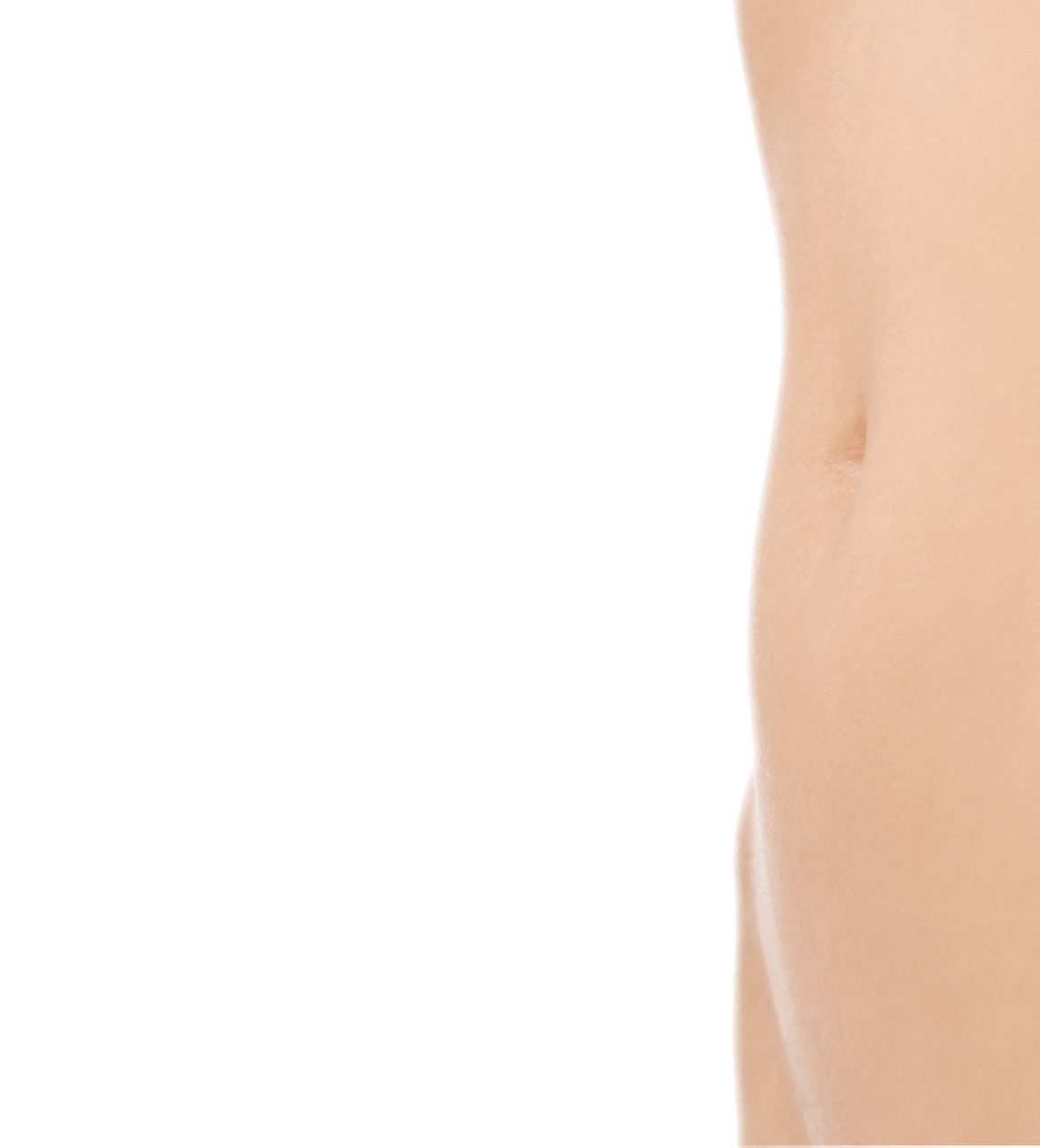Abdominoplasty
The Tummy Tuck
Many long for a flat stomach, and if you have tried every other method to reach your goal without success then this procedure may be right for you. An abdominoplasty can remove excess skin and fat, improves abdominal contours and scars and can tighten the stomach muscles. Also called an apronectomy, the terminology relates to different combinations of each procedure.
What does the procedure involve?
The standard abdominoplasty involves removing excess skin from abdominal wall between the pubic area and the navel (umbilicus). The skin of the abdominal wall is then drawn down from the navel and sutured at the pubic level and the navel is repositioned to its normal location. The patient is left with a scar that is usually curved and which stretches across the lower part of the abdominal wall at the level of the pubic hair. There will also be a scar around the navel. Any looseness of the muscles of the abdominal wall or hernia is repaired at the same time. Lipsuction may be carried out during this procedure to thin the abdominal wall and flanks during the same surgery.
In the extended abdominoplasty surplus skin and fat of the loins and back are removed so that the scar extends around the flanks onto the lower back.
Apronectomy
An alternative method is the Apronectomy; surplus skin below the umbilicus is removed as before and still leaves a low abdominal scar at the level of the pubic hair. However, with this method the naval is not disturbed and liposuction is usually carried out at the same time to reduce the thickness of fat in the abdominal wall. Again any loose muscles or hernia of the abdominal wall is repaired at the same time.
Is this treatment right for you?
Anyone who has abdominal fat may be a candidate. In women the issue commonly occurs after pregnancy, but is also greatly aggravated by weight loss. The muscles of the abdominal wall may be weakened by pregnancy and actually pulled apart in the middle (divarication of recti). Men are similarly affected by weight loss.
The procedure may also reduce stretch marks (stria); these are simply the scars left after extreme stretching of the skin. They are usually most apparent on the lower part of the abdominal wall. Although there is no specific treatment, many can be removed in an abdominal reduction and those remaining are tightened, making them look less obvious.
Patients unable to tighten the abdominal wall skin with exercise or wish to achieve a smoother, flatter abdomen will also benefit.
Post Operative Recovery
The patient is left with noticeable scars as aforementioned. Other different scars may be left where the patient has particular individual problems, but these will of course be discussed in depth with you by your surgeon should they be necessary.
Dependant on many factors, some patients heal more efficiently and produce ‘better’ scars than others. In any case, all scars are red initially. It is essential that the patient understands where these scars will be and should discuss them with the surgeon. The objective will be to hide them beneath underwear and swim wear.
There will be numbness in the lower part of the abdominal wall after surgery. This is usually temporary but in some cases it remains permanently. When liposuction has been performed in conjunction with an abdominoplasty, there will be bruising for two to three weeks and swelling that may take three to four months to fully settle.
"Four months on and I'm really happy with the results of my surgery, I have a flat stomach, a belly button in the right place and a very neat scar - I couldn't be happier."
Charli





